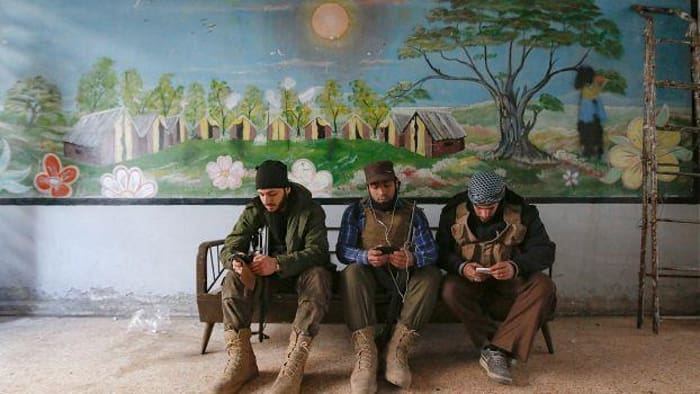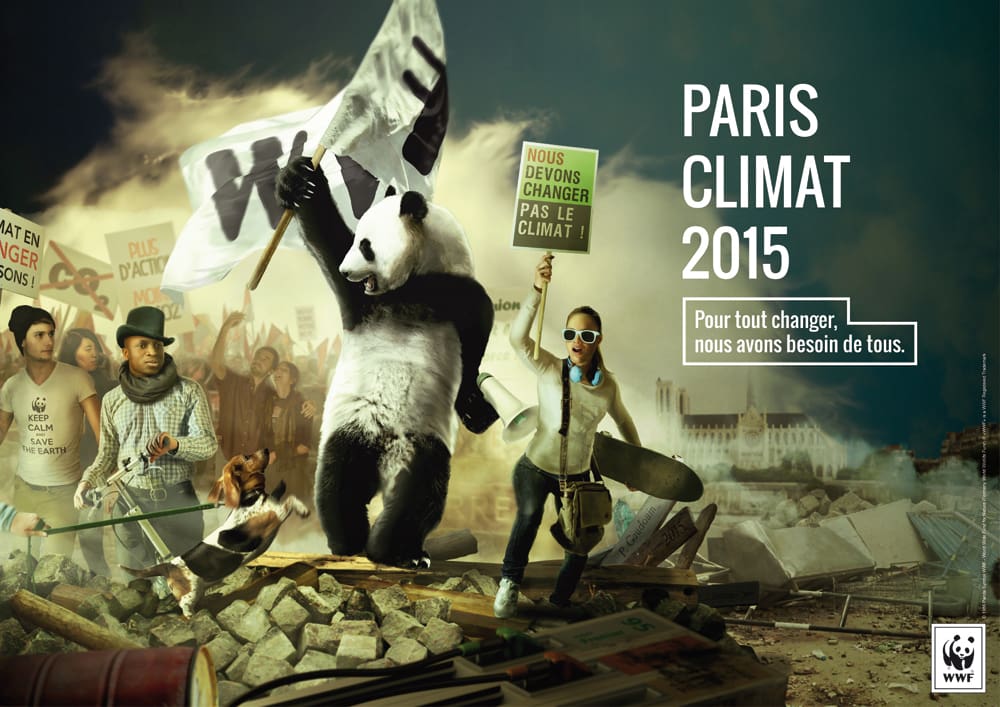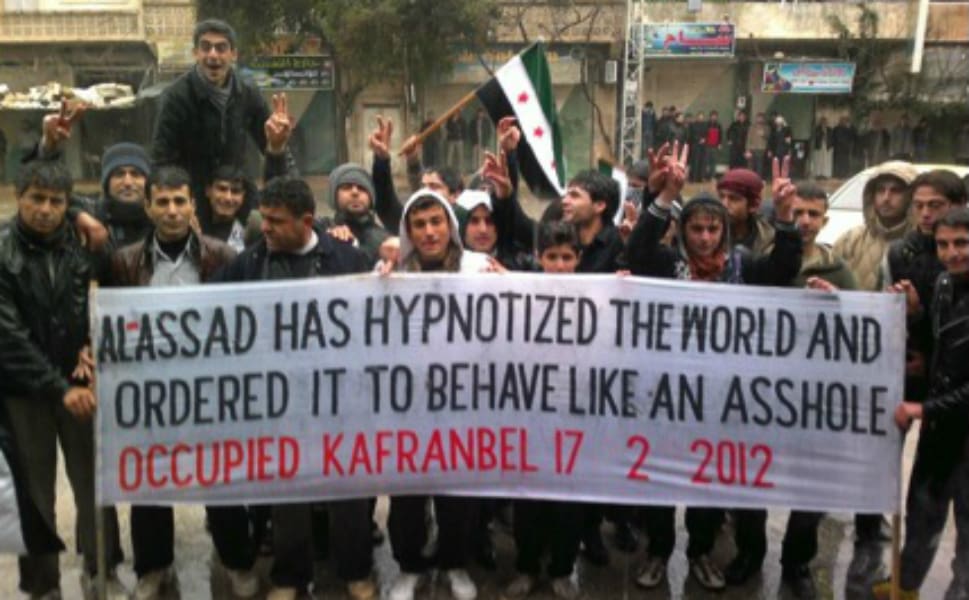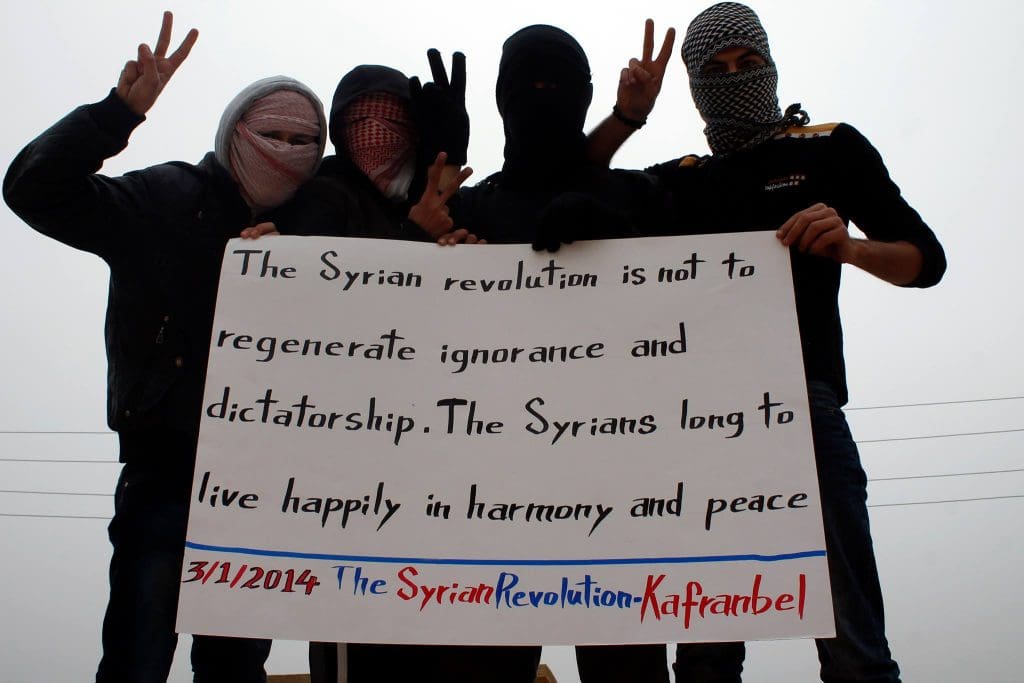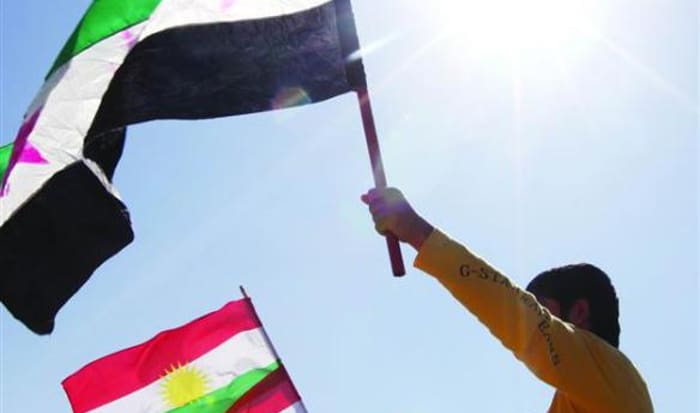“What I really want is justice in Syria”
An interview with Syrian photojournalist Hosam Katan by Harald Etzbach
1 April 2019 (original post [in English / in German] on the Rosa Luxemburg Stiftung’s website)
Of course, I have a duty to document, but if there is an opportunity to get my message across without producing the typical war pictures, then I prefer that.
Hosam Katan (b. 1994 in Aleppo, Syria) began working as a photographer for the Aleppo Media Center at age eighteen. A short time later his photographs were circulated by Reuters and published in numerous international magazines. Katan’s work has won numerous international awards. In late 2015 Katan left Syria via Turkey and came to Germany as a refugee, where he studies photojournalism at the University of Applied Sciences and Arts in Hanover. In 2017 his photobook Yalla Habibi – Living with War in Aleppo, with photos taken in the photographer’s hometown between 2013 and 2015, was published by Kehrer Verlag. This interview was conducted by Harald Etzbach for the Rosa Luxemburg Stiftung.
Harald Etzbach: You were still a teenager when the revolution in Syria started in 2011. How did you experience that time?
Hosam Katan: When the Arab Spring began, it came as a complete shock to us. We watched closely what happened in Tunisia, Egypt, or Libya, the overthrow of Ben Ali, Mubarak, and Gaddafi. We had grown up knowing that “the walls have ears.” You can’t speak openly. At the same time, we knew that Syria was actually a rich country and that there was this great social inequality.
I come from the eastern part of Aleppo, and there it was quite obvious. You just have to compare the eastern part of Aleppo with the western part, it’s like going to another country. Syria was a country for people with power and money. If you had no power and no money and you didn’t know anyone in government or other influential positions, you didn’t have any rights at all.
For us, the revolution meant the chance to make a change. At first the demand was not even the overthrow of the regime. We just wanted some basic freedoms, the lifting of the state of emergency, free elections. But the regime immediately responded with brutal force. Friends of mine were shot or disappeared into the prisons. We realized that there was no room for negotiation with the regime. Assad considers the country his property.
HE: At that time, you also started working as a photojournalist.
HK: There were mostly young people at the demonstrations. It was very dangerous. You could only stay there for about ten minutes, then the shabihai showed up and started shooting at people or arresting them. We then filmed these demonstrations using our cellphone cameras to document them. Foreign journalists were not there, and there is no independent media in Syria. That’s how I started taking pictures. Then, later, when I saw my videos on Al Jazeera or other broadcasters, I realized the great importance of media work—that it is important to show what is happening in Syria.
After Aleppo was divided in July 2012, I began to work as a photographer. The eastern part of the city was no longer under regime control, and I could meet friends I previously had known only under their nicknames on Skype or on social networks. I became a member of the Aleppo Media Center at that time. We were about thirty-five people. Whoever had a laptop or camera brought the devices, and step by step we started organized media work.
At the same time we also worked for foreign journalists. I taught myself a lot during that period, but I also learned from the journalists, whom I asked how they work, what criteria they apply when they select photos for publication, and so on.
HE: From 2013 you also worked for Reuters yourself. Did you get guidelines for your work from the agency, or were you still free to choose your topics?
HK: Reuters had thirteen photographers in east Aleppo at the time, so they had plenty of choice, and I was largely free in my work. Of course, if they wanted special things they asked me. But in general I worked without guidelines and took photos of people’s everyday lives, for example. It’s also just not predictable what is going to happen. A helicopter can suddenly pop up dropping bombs. Then it comes down to witnessing the moment immediately and documenting events.
HE: In your work there are roughly two categories; on your homepage you call them “Daily Life” and “Moments.” On the one hand, photos of “normal” everyday life in war: playing children, market scenes, and the like, and then “classic” war photography: destruction, injured and dead people. What is the relationship between these two types of photographs?
HK: Things happen all at once, and the situation can change from one second to the next. Furthermore, I didn’t just want to take a one-dimensional look at this war, but I wanted to show the whole picture. I’m familiar with the city, I’m a part of it, and I speak Arabic and can keep a low profile. That’s why I was able to move more freely. I wasn’t like a foreign journalist who always attracts attention, and who only stays on site for a week or two to realize a specific project, but I lived in the city. So I didn’t take photographs only when something dramatic happened, when there was an attack for example, but I had a responsibility to show all the other things, including daily life.
HE: But you also show the violence, the people covered in blood, the dead children who are rescued from the rubble of the houses. How do you decide whether or not to take pictures in a particular situation? This is also an ethical and moral question.
HK: There’s not a lot of time to think in these situations, you act more or less automatically. For example, if I see someone who is injured and I am the only one in this situation who can help, then it would certainly be wrong to take a picture. But when I see that the White Helmets are already there to help, I can start to pursue my work as a photographer. I’ve always tried to separate my own feelings from my work to be more professional.
At the same time, however, there was always something that I can’t describe exactly, but that you can feel: if people don’t want to be photographed they show it very clearly, and if it’s okay for them they show that too. Sometimes all of a sudden you have the clear feeling that it’s not right to take a particular photo. I look through the viewfinder and find that something is wrong, because eventually I or anyone else could be in this situation that I’m photographing right now.
But to be honest, there was no specific way for me to determine what I show and what I don’t. I tried to think of my photo and focus on getting it right, because even in a war situation, photos don’t just have to be horrible. For me, photography is a matter of mind and emotions, and on that basis as a photographer I have to make decisions again and again.
HE: I remember especially the photograph of a hand sticking out of the rubble of a collapsed house. This is almost a symbol of war, destruction, and death.
HK: That’s what I mean. I feel that this photo is stronger than those photos showing blood and dead people. Of course, I have a duty to document, but if there is an opportunity to get my message across without producing the typical war pictures, then I prefer that.
HE: Were there situations where you took a photo and later decided not to publish it?
HK: Yes. There is, for example, the photo of a young girl I took after an airstrike in September 2014. Two barrel bombs had been dropped on the same area. There was terrible destruction; thirteen people had been killed. I was photographing the collapsed houses and the people looking for their loved ones under the rubble when I saw the girl. That was a photo I really wanted to take, it was a photo that had something to say. The girl was standing outside the destroyed house of her grandparents, there was some blood on her face. She was blonde, wearing a blue t-shirt and jacket with a dalmatian pattern. I photographed her several times from a distance of about one meter. She didn’t say anything, but I could see she was very angry—angry not necessarily about me photographing her, but about all that was happening around her.
Later, when I put together my photos for Reuters, I felt it would be wrong to simply publish the photo as a press photo. It’s now published in my book. It’s in a different context there. In the book I try to show all aspects of the war, and her photo is part of a story in which I describe how people react to being photographed.
HE: You spoke of the message of your photos. What is this message? What do you want to achieve with your photos?
HK: Of course, I’m not so naive as to think I can change the world with my photos. We all know there are a lot of terrible things in this world. But I believe there is hope. There are still people who care, who are trying to do something. There is this phrase that even a marathon starts with the first step. I just try to keep going, get on with my job. Even if I can only change something on a small scale, that’s fine for me at the moment. We should help people become more aware. As far as I’m concerned, I’m young, I have energy, and I want to pass something on with my work.
In the summer of 2014 I took a break and was in Turkey for a short month. I was pretty down and a little depressed. I had published photos in the New York Times and the Wall Street Journal. I’d won prizes, but I wondered if I wasn’t simply using the people I was photographing to get ahead in my profession. I no longer had any desire to work, to photograph—actually for nothing. And then, out of the blue, someone from Belgium got in touch with me. He asked me about an album of a family I had photographed. These were very moving and emotional images, and he said they had touched him a lot and that he was now looking for a way to get in touch with this family and help them.
Of course, money is not everything. This family, for example, lost a daughter and another daughter was seriously injured. Money wouldn’t be able to make up for that. Money doesn’t bring back a human being. On the other hand, the money gave them the opportunity to go on with their lives, such as leaving the refugee camp and looking for a real apartment.
So with my work I managed to draw attention to special stories. At the same time, I hope that people who look at the photos from everyday life in war will be able to make a connection to their own lives more easily.
If you really want peace, you have to care about establishing justice first.
What I really want to achieve, though, is justice in Syria. I get very angry when I hear people talk from a naive point of view about everyone in Syria being violent and bad. Certainly this war is a complicated matter, but it has a clearly nameable cause. If you really want peace, you have to care about establishing justice first. When I think about it, when I’m committed to it, that’s something that gives my life meaning. This is something I want to contribute to with my work and with my whole life.
HE: You have published a book. It’s called Yalla Habibi: Living with War in Aleppo. How did the first part of this title come about?
HK: There is a connection to the concept of the book. Yalla means “go!” or “hurry up!” In Aleppo everything always had to go fast, you had to move very quickly. Everything could change all of a sudden and unexpectedly. Everything was fine, but a moment later you see only destruction in the street you are standing on, and many people have been killed.
At the same time, for many people in Aleppo home meant a lot. Conditions were very tough, but still many people stayed in the city and in its neighborhoods. This has something to do with love, and that’s why the word habibi (“darling”) is in the title. When people in the West understand some Arabic they often know these very words: Yalla habibi. But for them it has more to do with partying or the like. You can’t necessarily immediately infer what the book is about from its title. So there are very different aspects to why I chose this title.
HE: The book is dedicated to photojournalist Anja Niedringhausii who was killed in Afghanistan in 2014. What relationship do you have with her and her work?
HK: Unfortunately I was never able to get to know her, but I followed her work. When I came to Germany, her photobook was the first one I bought. I really have great respect for foreign journalists and photographers who leave their own comfort zone to report on such conflicts or wars. Anja Niedringhaus was killed in Afghanistan; she chose this life despite having completely different options. And although we no longer have very many foreign journalists in Syria—apart from a few in the areas controlled by the regime—we are somehow connected. They are people who are in no sense really directly affected by these wars and who are nevertheless trying to do something. People like Anja Niedringhaus or Marie Colviniii are tremendously inspiring, and that’s why we should keep the memory of them alive.
HE: You left Syria and live in Germany now. So in a way you’ve lost immediate access to the issue that has dominated your life and work in recent years. How do you deal with it, and what are your plans?
HK: There are many reasons why I came to Germany. I was very young and was successful with my work. But we never stop learning, and I wanted to know more about photojournalism. I am aware that the subject I started with as a photojournalist is war. I am still very interested in this issue and I have a strong connection to it. But I also know that photojournalism is much more than war, and there is a whole range of other issues that interest me too.
I have been studying in Germany for a year now. This year I looked through my old archive and published my book, which was very important to me. At the moment I am working on the subject of “integration.” I’ve photographed some stories, but it’s a complicated and broad subject; it’s not something you’re done with in a month or two. I’ve seen quite a few reports on the issue, but I don’t think they convey the whole picture.
I want to use my experience as a refugee to open up a perspective from within. But I also think I’m going to get back to my subject and photograph conflicts and wars again. Integration and other social issues are important, but in the end I consider the issue of war to be the more important one.
An exhibition of Hosam Katan’s photography from Aleppo 2013-2015 was recently presented at the Rosa Luxemburg Stiftung in Berlin under the title Everyday Life in Wartime.
Harald Etzbach is a historian and political scientist who works as a translator and journalist. He writes on issues concerning the Middle East and American foreign policy.
Interview conducted in German; translation reprinted with the kind permission of the author.
Featured image: from Hosam Katan’s 2019 exhibition Everyday Life in Wartime: Aleppo 2013-2015. Source: Hosam Katan via Rosa Luxemburg Stiftung
Notes:
i Shabiha (meaning “ghosts”) are irregular armed groups supported by the Assad regime; the shabiha are used in particular to crush insurgent movements and eliminate opposition activists.
ii Anja Niedringhaus (1965–2014) was a German photojournalist who reported from a variety of war zones starting in the 1990s. In April 2014, she was assassinated while covering the presidential election in Afghanistan.
iii Marie Colvin (1956–2012) was a British journalist. She was killed in Syria in 2012 while covering the siege of Homs. In January 2019 a US court blamed the Syrian government for Colvin’s death and ordered Damascus to pay 300 million US dollars in compensation to Colvin’s family.

